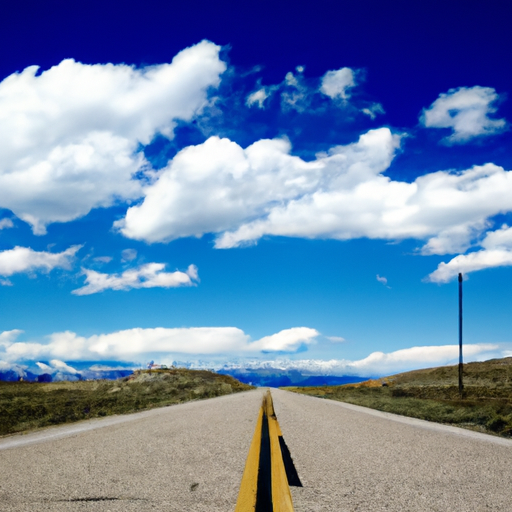Embark on an unforgettable road trip from Denver to Yellowstone National Park, as we guide you through the best route to take. This article explores the distance between these two remarkable destinations and offers valuable insights to help you plan your journey effectively. Discover the scenic wonders that await you along the way, from breathtaking landscapes to charming towns, and get ready to create memories that will last a lifetime. So fasten your seatbelts and get ready to hit the open road on an exciting adventure to Yellowstone National Park!
Planning Your Route
Choosing the Best Time to Visit
When planning your road trip from Denver to Yellowstone National Park, one of the first things to consider is the best time to visit. Take into account the weather conditions, as certain times of the year may have more favorable weather for driving and exploring the national park. Additionally, it’s important to factor in the peak tourist season, as this can affect traffic and crowds. Consider park closure or restricted access during certain times of the year, as well as school holidays, to avoid potential inconveniences. Lastly, avoid major events and festivals that may draw large crowds and impact your journey.
Deciding on Your Route
Choosing the right route for your road trip is crucial for a smooth and enjoyable journey. Analyze multiple route options and evaluate the pros and cons of each. Consider scenic routes that offer breathtaking views and memorable experiences along the way. Alternatively, if time is of the essence, opting for the fastest route can be a practical choice. Take into account toll roads and fees that may be involved, as well as the option of highways or interstates for faster travel.
Considering Alternative Routes
Sometimes, the road less traveled can offer hidden gems and unique experiences. Explore lesser-known routes that may take you off the beaten path and provide a more authentic and adventurous drive. Taking back roads can often lead to a more scenic drive with less traffic. Additionally, consider including off-the-beaten-path attractions in your route, allowing you to discover and explore new places that may not be as popular or crowded.
Calculating the Distance
Knowing the distance between Denver and Yellowstone National Park is essential for planning out your trip. Utilize online mapping tools to determine the total road distance, giving you an idea of how long the journey will be. Breaking down the distance for each leg of the trip can help you plan for necessary stops, meals, and rest breaks along the way.
Determining the Driving Time
While calculating the distance is important, it’s equally crucial to determine the driving time needed for your road trip. Account for frequent stops to take in the scenery or visit points of interest. Consider the traffic conditions, as this can significantly impact travel time. Take into account the speed limit and plan for rest stops and breaks to ensure a safe and enjoyable journey.
Mapping Your Stops
A well-planned road trip includes strategically mapping out your stops along the way. Identify points of interest, such as scenic viewpoints or historical landmarks, that you would like to visit. Create an itinerary that allocates an appropriate amount of time for each stop, ensuring you have enough time to explore and experience each location. Consider meal breaks and rest stops, making sure to schedule them into your itinerary to avoid any unnecessary delays.
Researching Road Conditions
Before embarking on your road trip, it’s important to research the current road conditions. Check the official websites of state and national parks along your route for any road closures or restrictions. Additionally, contacting local visitor centers can provide valuable information about the conditions of the roads you will be driving on. Take into consideration the weather and seasonal conditions, as these can impact the safety and accessibility of certain areas.
Checking for Construction and Detours
To avoid any unexpected delays or detours, it’s crucial to check for ongoing construction and potential detours along your route. Discover online sources that provide real-time updates on construction projects. Listening to local radio stations during your drive can also help you stay informed about any construction or detours in the area. Lastly, it’s always a good idea to carry physical maps as a backup, just in case you encounter any navigational challenges or lose access to electronic devices.
Identifying Fueling Stations
When embarking on a long road trip, it’s important to identify fueling stations along your route. Plan where and when you will stop to refuel your vehicle, ensuring you don’t run out of gas in remote areas with limited services. Research gas stations or rest areas along your route and make note of their locations to avoid any unnecessary stress.
Finding Accommodations Along the Way
If your road trip is a multi-day journey, finding accommodations along the way is essential. Research and book campgrounds if you plan on staying in a tent or RV. Consider lodging options such as hotels or motels if you prefer a more comfortable stay. If your route passes through or near national parks, take advantage of the accommodations they offer, such as cabins or lodges. Additionally, plan for overnight stops and make reservations in advance to ensure availability and a seamless travel experience.
By taking the time to plan and consider various factors, you can optimize your road trip from Denver to Yellowstone National Park. Choose the best time to visit, decide on the most suitable route, and consider alternative options. Calculate the distance and driving time accurately, map out your stops, and research road conditions, construction, and detours. Finally, identify fueling stations and find accommodations along the way to ensure a smooth and enjoyable journey. Happy travels!
